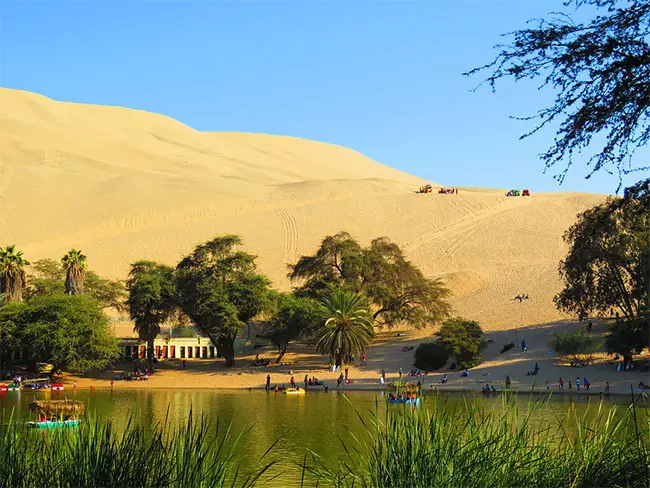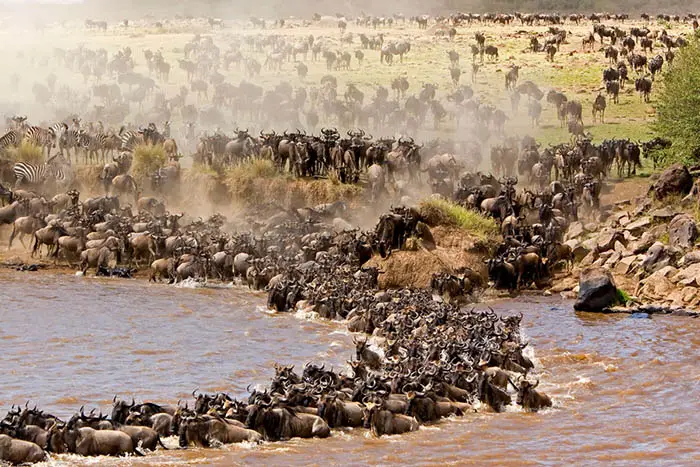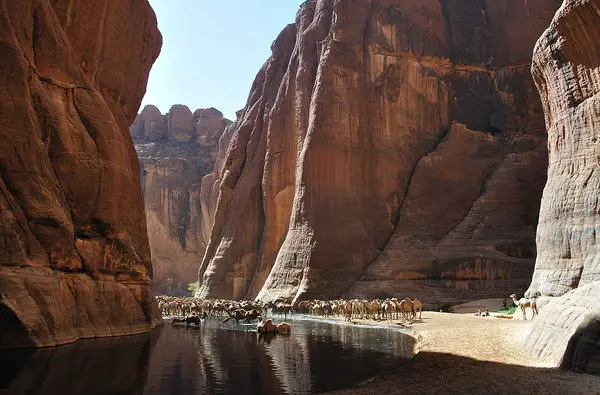Lake Turkana is one of the most amazing desert lakes in the world. Lake belongs to the “Lake Turkana National Parks” in Kenya. This desert lake, also known as Lake Rudolf is located on the Kenyan-Ethiopian border where northward of the Great Rift Valley of Kenya. This lake, reminiscent of the Great Sea, area is 6,405 square kilometers in size. Actually, this lake is the largest desert lake in the world and the most saline lake in Eastern Africa.
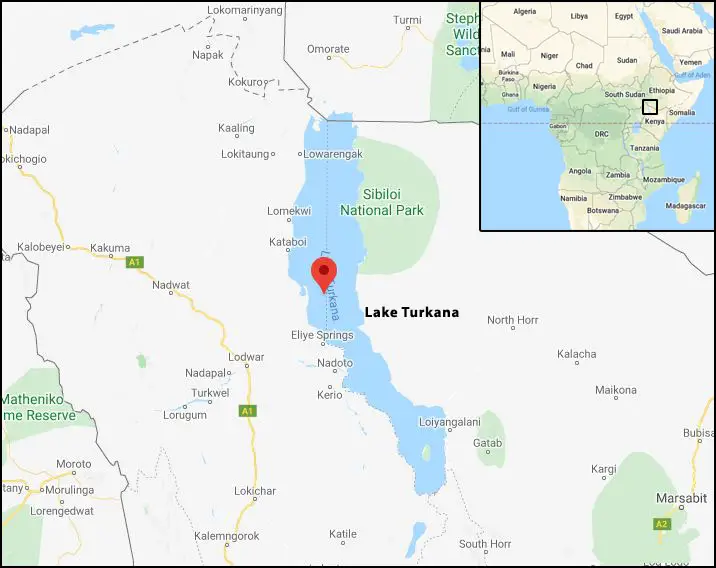
Emo, Turkwel, and Kerio rivers of Ethiopia are fed the Lake Turkana. But 90% of the water is delivered by the Emo River. However, there is not a single river that starts from the lake to take water out of it. Evaporation by high desert temperature is the main process of water exhaust from the lake. Lake Turkana is 290 km long and 32 km wide, and the maximum depth is 109 meters. The watershed is spread over 165,100,000 acres feet.
About 7,000 – 8,000 years ago, the lake was more than 400 kilometers long. At that time, a river flowed from the lake to the northwest into the famous Nile River.
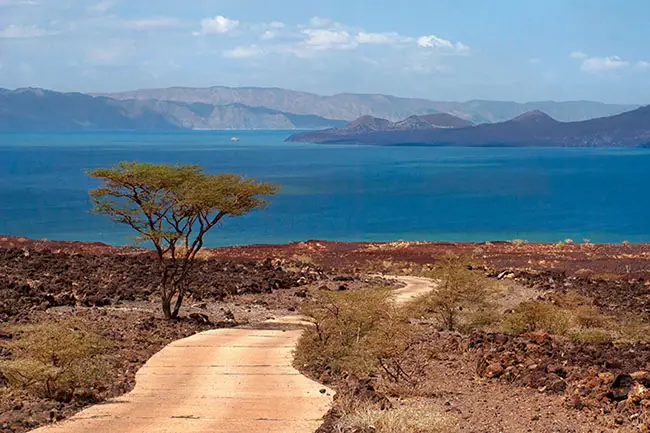
Extremely strong winds and storms generate in Lake Turkana. During the warm sunlight, the lake gets hotter quickly and cooler slowly than the land. Therefore severe wind storms blow across the lake often. So this area is suitable land for wind power generation. Wind turbines built in this lake surrounding are generated electricity of megawatt 310 (MW) by steady strong winds. This is the largest wind power generation project in Africa.
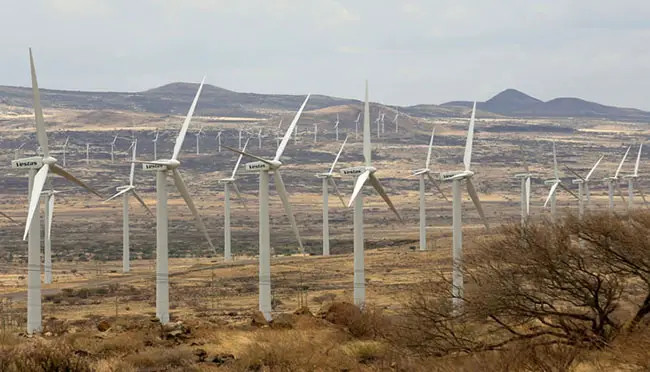
Life in the lake
The lake surrounding is a dry, arid landscape. But Lake Turkana is home to a large number of flora and fauna. The largest Nile crocodile population in the world lives in this lake. In addition to that, the Hippopotamus, Bird species, a variety of venomous snakes, and hundred species of fish are home in this Lake. The rocky shore environments are inhabited by Scorpions and Carpet Vipers.
The oldest fossil remains of Human habilis, which lived two million years ago, have been found on the shores of Lake Turkana. These fossil deposits are common in Mammalian and Molluscan remains. These fossil deposits have contributed to understanding the paleo-environment in the region more than any other deposits in the continent.
Today, more than four million indigenous people belong to ten African tribes life depends on this lake. They cultivate food crops, animal husbandry, and fishing associated with the lake around them. Lake is rich in fish but the variety of fish species is few with comparing other lakes in the continent.
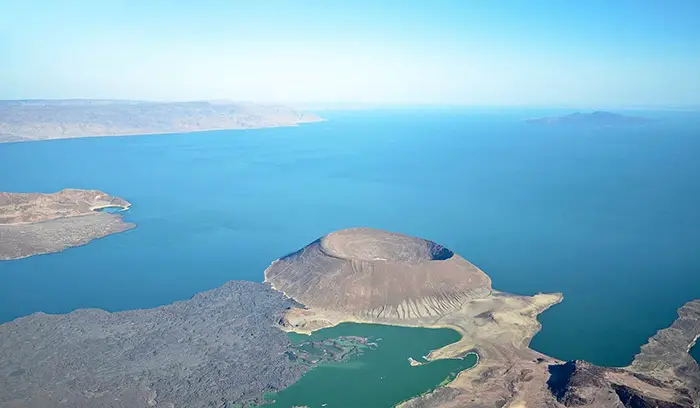
Impact on Lake Turkana
At this time, Lake Turkana is facing a major disaster. The Lake’s main source Emo River is going to be crossed by the dam (Gilgel Gibe III Dam) and generate hydropower. This will drain out the lake’s water and will be a dead lake like the Aral Sea. There is a perception that the watershed will be exhausted and it would be a great disaster for not only fauna and flora but also for indigenous people depending on the lake.
Due to the significance of the Lake, Turkana Lake National Parks has been listed as a UNESCO World Heritage Site.
See also;- Red Lagoon in Bolivian Plateau



